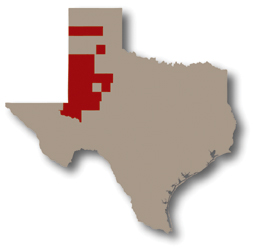Researchers in Texas have detected the chemical perchlorate in milk, crops, and a significant portion of the state’s groundwater. However, it’s unclear how much exposure people face through food or water, and a scientific gathering has just produced a statement downplaying perchlorate’s biological effects.

Perchlorate is known to occur naturally only in parts of Chile (SN: 10/16/99, p. 245: http://www.sciencenews.org/sn_arc99/10_16_99/fob3.htm). Most perchlorate in the environment is thought to come from Chilean fertilizer ingredients or from solid rocket fuel, which contains synthetic perchlorate.
The compound can affect the thyroid gland because it inhibits the tissue’s uptake of iodine from the blood. Health concerns focus on pregnant women and children, whose development could be disrupted by decreases in thyroid hormone due to insufficient iodine uptake.
So far, only California has established a preliminary drinking-water standard for perchlorate–4 micrograms per liter. Last year, the Environmental Protection Agency proposed a more stringent standard of 1 g/l, but the Department of Defense challenged the underlying risk assessment, which is now being reviewed. Other groups argue that amounts dozens of times EPA’s proposed limit would still be safe. None of these proposals accounts for exposure to perchlorate through food.
To study a potential source of perchlorate in the diet, Purnendu Dasgupta of Texas Tech University in Lubbock and his colleagues bought seven containers of whole milk from the local supermarket and provided samples to two laboratories that used different analytical methods. All tests, including those of samples from milk labeled as organic, detected perchlorate in concentrations ranging from 1.7 to 6.4 g/l.
The concentrations of perchlorate in milk “came as a considerable surprise to us,” Dasgupta and his colleagues say in an upcoming Environmental Science and Technology.
Several researchers informed of the discovery by Science News, however, were neither surprised nor overly concerned. Recent perchlorate findings “reemphasize the need for a credible safe-dose estimation” but aren’t high enough to suggest an immediate hazard to health, says former EPA toxicologist Michael Dourson, who now runs Toxicology Excellence for Risk Assessment, a consulting firm in Cincinnati that has proposed 70 g/l as a safe maximum concentration for drinking water.
Some of the Texas Tech researchers have also recently found perchlorate in fruits and grains, and they and other scientists have identified the chemical in leafy vegetables irrigated with perchlorate-contaminated Colorado River water.
What’s more, Texas Tech engineer W. Andrew Jackson, who didn’t participate in the milk study, reported in July at a research conference that perchlorate is detectable in many of the wells scattered over more than 77,000 square kilometers (30,000 square miles) of west-central Texas. Geographic concentration patterns don’t suggest pollution from point sources such as chemical plants or aerospace facilities. Even so, says former EPA scientist Edward Urbansky, it’s not clear whether the findings indicate natural occurrence of the chemical in that region.
The Department of Defense and the University of Nebraska convened experts in Omaha last week to review perchlorate toxicity data, including data from human studies that suggest perchlorate may be harmless to people with sufficient iodine in their diets. One panel “felt very strongly that rather than trying to regulate perchlorate down to some very low level in food and water, it would be better to [identify and treat] iodine-deficient people,” says participant James D. Wilson of St. Louis, a risk analyst retired from the Washington, D.C.–based think tank Resources for the Future.
****************
If you have a comment on this article that you would like considered for publication in Science News, send it to editors@sciencenews.org. Please include your name and location.







